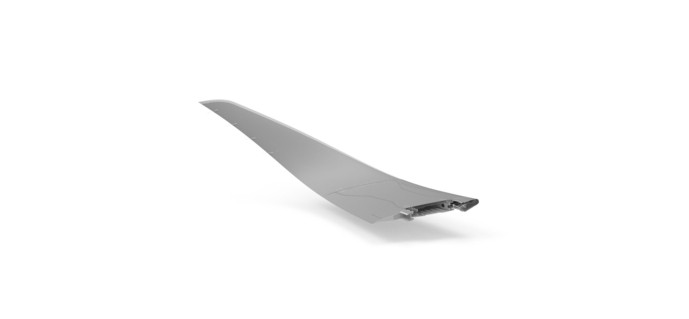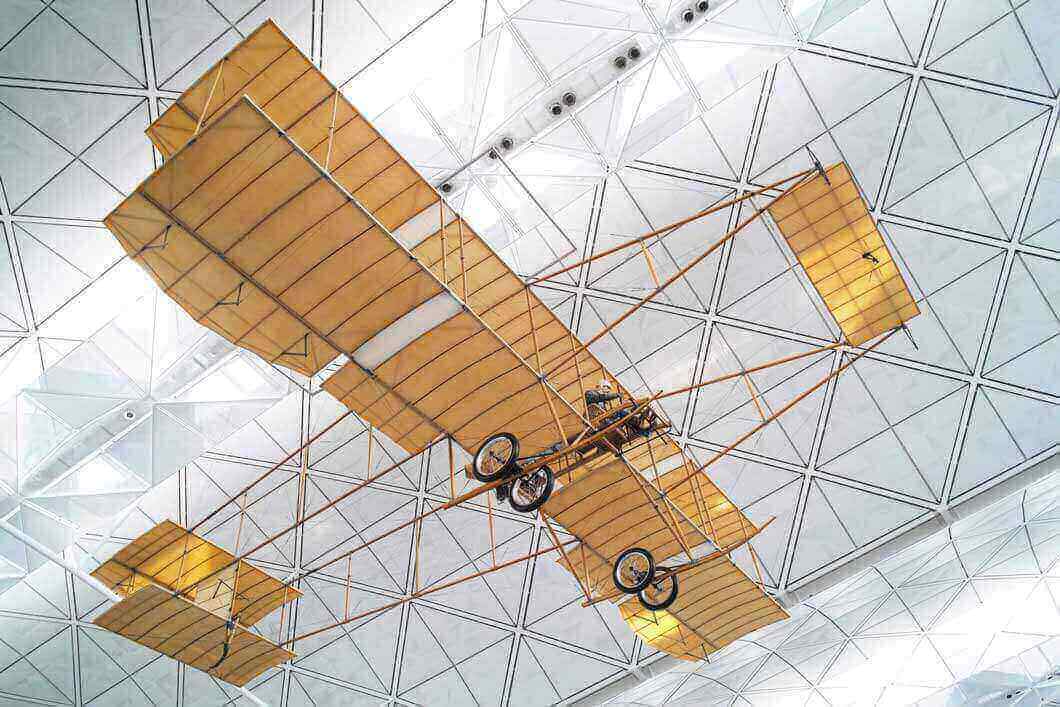Winglets and Sharklets: An Inspiration by Nature
17.09.2020
The main goal of Bionics (BIOlogy + TechNICS) is the solution of technical problems and includes the analysis of biological systems, the abstraction of the resulting findings and the application of these to technical solutions. Numerous technical developments are based on inspiration from nature. Best known developments in aerodynamics are winglets or sharkles on aircraft wings.
Oil Crisis
As a result of the oil crisis in the early 1970s, when the price of aviation fuel rose, airlines and aircraft manufacturers looked for ways to improve the operational efficiency of aircrafts.
Winglets & Sharklets
Numerous approaches to solving this price problem delivered revolutionary aerodynamic concepts, including Winglets and Sharklets.
Winglets or Sharklets are upward or downward curved extensions at the wing tips. Although they cause more weight and drag, winglets improve the environmental performance of an aircraft by reducing the induced drag caused by lift, thus minimizing fuel consumption.
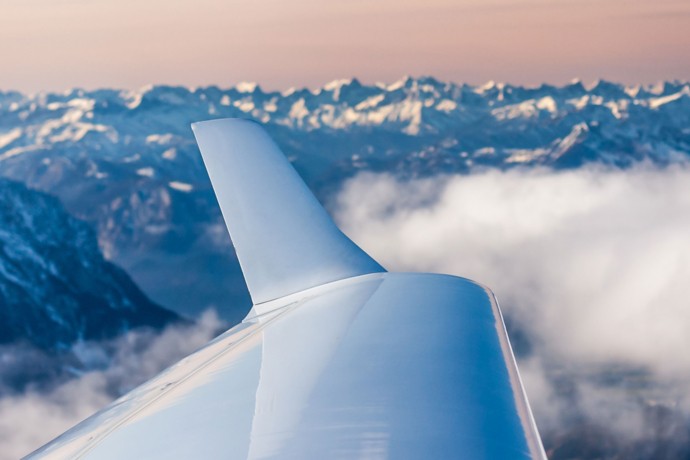
Aerodynamic Lift
For an airplane to take off, the lift - air hitting a wing with an approach speed - must be large enough to overcome gravity. The special shape of the profile of the wings ensures that the air flows faster at the top of the profile than at the bottom. This results in a higher pressure on the underside of the wing than on the upper side (Bernoulian equation). The resulting force of this pressure distribution forms the lift.
Induced drag: edge vortices and wake vortices
As an unavoidable consequence of lift, every aircraft generates rotating and long-lasting vortices behind its wings - so-called edge vortices or wake vortices. At the wing tips there is a largely unhindered flow around the wing tips because of the corresponding pressure difference. This creates a vortex at each of the two wing tips. These counter-rotating edge vortices do not generate lift, but they do require energy, which acts as induced drag. As a result, the total drag of the aircraft increases.
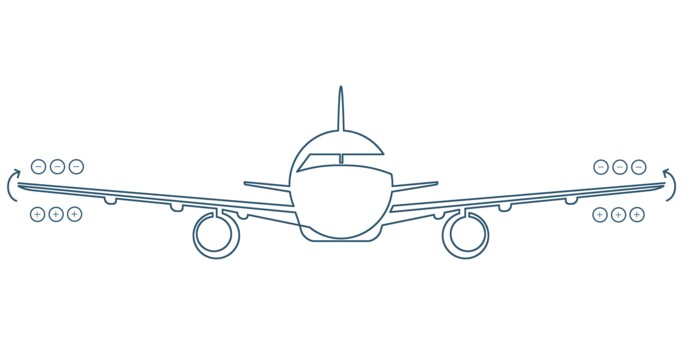
Matrix of the International Civil Aviation Organisation (ICAO)
In addition to the problem of energy efficiency, edge vortices or wake vortices pose another problem. Especially during take-off and landing smaller aircraft can get into the vortex field of larger ones. Since wake vortices do not disappear immediately and can remain above the ground for a long time, distances have been defined between aircraft that want to take off or land on a runway. Depending on their weight category, they must maintain different distances. This is the so-called ICAO separation matrix. Waiting times resulting from this are particularly problematic at highly frequented Airports.
Stretch of the Wings
The Λ aspect ratio of the wings represents a solution, since so edge vortices and thus the induced air resistance are reduced. Λ is a dimensionless key figure for the slenderness of an airfoil and defines the ratio of the span b to the mean wing depth t:
Λ = b/t
b... Span
t... average wing depth
However, the aspect ratio has a disadvantage: the stability of the wings as well as the maneuverability of the aircraft suffer from the strongly stretched wings. The additional space required would also pose further challenges for many airports and airlines. But nature shows how it can be done.
Nature as a Model: Wings of Birds
Investigations show that bird wings do not have pronounced marginal vertebrae. Rather, a relatively large wake is set into slow rotation behind the bird wings, which almost completely disappears after a distance of only a few wing depths. Large land birds, like eagles, vultures or storks, spread their fingered up hand wings in flight and reduce so the balance flow between lower and upper side around the wing tips.
Instead of only one vortex per wing tip, spread-out hand wings create several small vortices that extinguish themselves at certain points, so that the vortex system consumes less energy and thus the induced drag is reduced. This adjustment is passive and automatic.
Seabirds, such as albatross, gannet or swan, on the other hand, have narrow, pointed wing tips that tend to sweep backwards, thus reducing the induced drag.
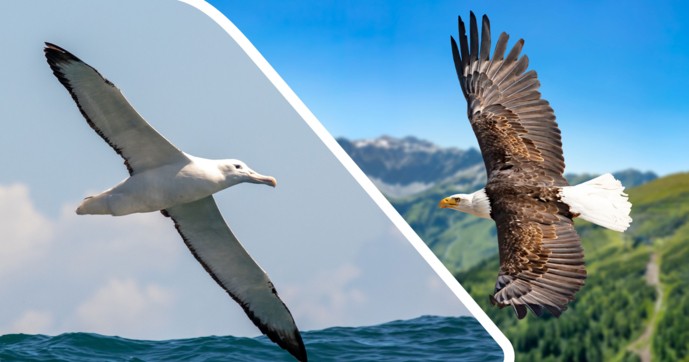
The Principle
If the effect of cascades of handswings unfolds only at a certain optimal setting, this very configuration should be modelable evolutionary strategically.
The Technique
In the wind tunnel, a wing similar to the stork wing with adjustable end wings was investigated in terms of evolutionary strategy and its adjustment parameters were modified. The aim was to achieve the lowest possible glide ratio ε =cD/cL*.
The result was a configuration similar to the hand wings, which improved the glide ratio by 11%.
* cL .... coefficient of lift
cD ... resistance coefficient
ε ... Key figure for the aerodynamic quality of an aircraft
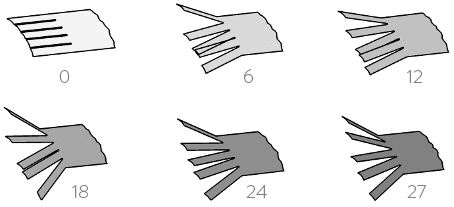
The Product: Winglets & Sharklets
Considerations of the drag conditions on bird wings were thus the basis for the development of wingtip designs in the form of winglets or sharkles, as they are increasingly used in today's commercial aircraft to reduce overall drag and thus fuel consumption.
